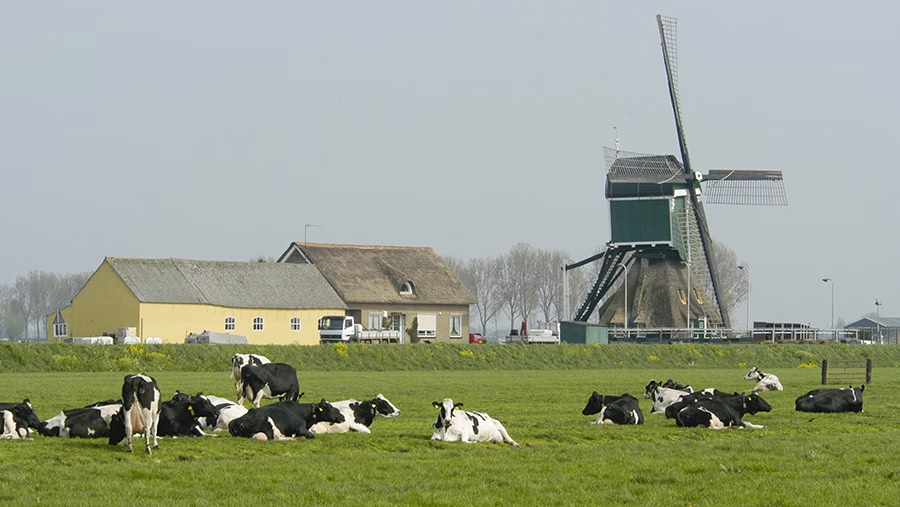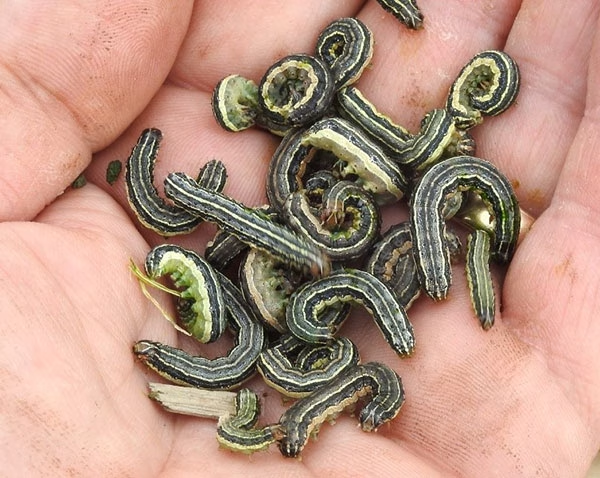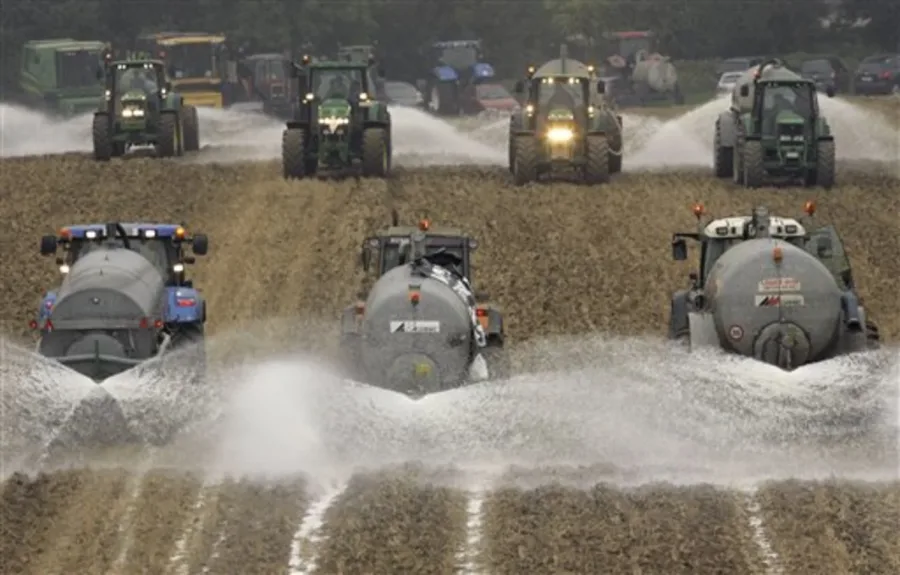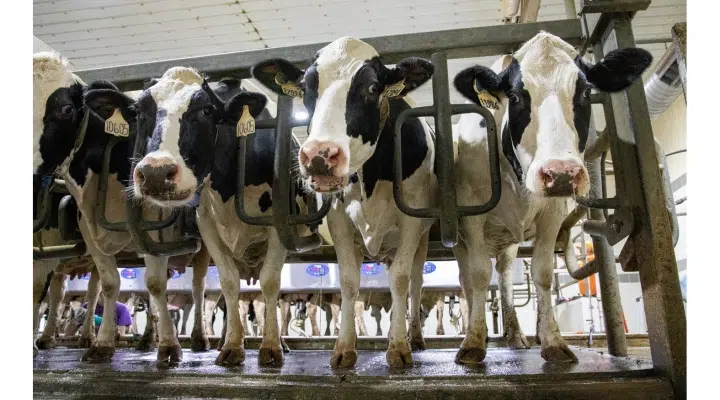How did top milk exporters boost production in 2024 amidst disease and market fluctuations?
Summary:
Despite significant challenges, global milk production is growing among leading exporters, buoyed by rising prices and market adjustments. While European output remains nearly constant with previous years, the UK’s gains slightly drive regional growth above 2023 benchmarks. Conversely, Bluetongue disease significantly impacts Germany and the Netherlands, though recoveries in France, Ireland, and Spain provide a counterbalance. Oceania’s notable production surge offers compensation for Argentina’s downturn. The world’s top five dairy exporters recorded a modest 0.4% production increase compared to September 2023 amid ongoing trade market shifts and efficiency drives. The dairy sector must now navigate disease, high costs, regulatory challenges, and unpredictable weather patterns, which impact food security and economic stability. Leading exporters are urged to pursue strategic innovations to uphold and further propel their output levels.
Key Takeaways:
- European milk collections dipped slightly, with the overall output on par with the previous year, highlighting regional disparities influenced by disease and conditions.
- Despite setbacks in northern Europe due to Bluetongue disease, gains in countries like France helped stabilize Europe’s milk production.
- Oceania significantly boosted global milk production, counteracting deficits in Argentina and highlighting its growing role in the international market.
- Top milk exporters collectively improved output by 0.4% from the previous year, signaling resilience amidst ongoing challenges like herd reduction and volatile markets.
- Projected price increases for dairy products are anticipated to foster more robust milk production practices and encourage growth despite existing hurdles.
- The global milk production trend remains below figures in the early 2020s, pointing to persistent obstacles, yet opportunities for adaptation and advancement remain ripe.

In a world where milk is more than just a staple beverage—it’s an economic powerhouse—understanding the ebb and flow of its production becomes crucial. The ripple effects of changes in milk output extend far beyond the borders of dairy farms, impacting global trade, food security, and economic stability. As the demand for milk continues to surge, how are the world’s top exporters tackling the myriad of challenges that threaten their supplies? What does it take to keep the milk flowing in a world of hurdles? Dive into the complexities of navigating disease, shifting markets, and climatic adversities—an essential journey for every stakeholder in the dairy industry.
Churn Through Challenges: The Resilient Rise of Global Milk Production in 2024
The global milk production landscape in late 2024 reflects a cautiously optimistic trend, particularly among leading exporters. Despite numerous challenges, the industry has shown remarkable resilience. A slight uptick in milk output has been observed, with the top five dairy-exporting nations collectively increasing their production by 0.4% compared to the previous year. This modest growth is a testament to the industry’s ability to overcome hurdles and adapt to changing conditions. The UK’s Department for Environment, Food, and Rural Affairs attributes this uptick to favorable market dynamics that have recently increased milk and dairy prices. These price increases are expected to incentivize production efforts despite the industry’s historical barriers to rapid growth. Furthermore, regional variations highlight a mixed picture, with some areas overcoming adverse conditions more effectively than others, thus contributing positively to the overall global output.
Farming on the Edge: Navigating the Complex Maze of Milk Production Challenges
Milk’s journey from farm to table is fraught with hurdles that challenge even the most seasoned agricultural sectors. A particularly tenacious adversary is a disease. As evidenced by the recent outbreak of bluetongue in Europe, diseases have the power to drop off percentages from expected output drastically. Germany, for instance, has been grappling with its lowest September figures since 2016. Historical records show that disease outbreaks can lead to prolonged periods of reduced production as affected herds produce less and often require culling to prevent further spread, thus exacerbating production woes.
Shrinking herds also play a pivotal role in shaping production prospects. Over the past three, perhaps even four, years, the number of dairy cattle has steadily declined, putting a natural limit on how much milk can be produced, regardless of other conditions. Factors contributing to this trend range from increased operational costs such as feed, labor, and equipment to stricter environmental regulations and shifts in land use priorities, reflecting an overarching restraint on growth.
Moreover, weather patterns remain a capricious companion for the dairy industry. Prolonged periods of drought or unseasonal frosts can significantly curb grazing and feed availability, impacting milk yield and aggravating the precarious balance of supply and demand that dictates market equilibrium.
Volatile milk markets compound these woes. The fiscal framework within which farmers and producers operate can pivot sharply, influenced by sudden demand shifts or unexpected economic policies. Such volatility often results in insufficient forecasting and planning, leading to surplus or scarcity, each with financial repercussions.
History shows that milk production is a tightrope walk predicated on diverse, interdependent variables. Each challenge offers lessons, forcing the industry to innovate and adapt to survive another season.
Innovate or Stagnate: How Top Milk Exporters Are Pushing the Envelope
Top milk exporters have yet to rest on their laurels in the face of these challenges, opting instead to embrace innovation and strategy to maintain and improve production levels. France’s resilient 3.2% increase in milk production exemplifies the benefits of investing in technology and sustainable farming practices. In recent years, French dairy farms have adopted precision agriculture tools to optimize feed management and improve overall herd health, resulting in enhanced productivity despite adverse conditions.
In the United Kingdom, leveraging data-driven strategies has become pivotal in helping farmers maximize yields. Technologies like real-time milk monitoring systems and automated milking machines have enhanced efficiency, reduced labor costs, and increased output consistency.
Meanwhile, countries like Ireland and Spain have focused on bolstering their production through enhanced breeding programs and improved herd management. These nations have maintained steady milk output despite environmental and economic pressures by selecting genetic traits that enhance dairy yield and disease resistance.
Looking towards a more sustainable future, many top exporters have prioritized reducing their environmental footprint through innovations such as biogas production from farm waste and improved water usage efficiency. These advancements contribute positively to the environment and enhance the profitability and resilience of milk production, paving the way for a robust industry in 2025 and beyond.
Dairy Dollars and Sense: Navigating the Price-Driven Surge in Milk Production
Price dynamics are pivotal in shaping production strategies for the world’s leading milk exporters. The recent uptick in milk and dairy product prices is a solid economic motivator for farmers and exporters to increase output. As prices rise, so do the potential revenues, enticing producers to overcome barriers such as disease and adverse weather conditions. This market environment encourages investment in improved farming techniques and technology to maximize yield, even amidst shrinking herds and resource constraints.
For farmers, higher prices translate to better margins, enabling them to justify the costs of increasing production volumes despite ongoing hurdles. This could mean expanding herds, intensifying dairy management practices, or exploring new markets. Exporters, too, see this as an opportunity to enhance their competitive edge. As global demand remains robust, particularly from regions recovering from the pandemic, tapping into higher prices bolsters profitability and market share.
Ultimately, while challenges persist, the economic incentives driven by price increases offer a compelling reason for industry stakeholders to push production boundaries. The allure of enhanced profits creates a dynamic landscape where innovation and resilience take center stage. This promises a gradual escalation in global milk production as producers adeptly maneuver through the complex demands of today’s volatile market. The potential for growth in the industry is significant, offering a hopeful outlook for the future.
Global Dairy Landscape: A Patchwork of Peaks and Perils
Regional variances in milk production offer a compelling tapestry of challenges and triumphs. Europe remains a juxtaposition of stability and struggle. While countries like France have seen production gains, others like Germany and the Netherlands grapple with natural adversities. The onset of bluetongue disease has muted growth, highlighting how external factors can dent established dairy operations [Eurostat]. Conversely, Oceania is experiencing a boom. With favorable weather and strategic investment in sustainable practices, regions like New Zealand and parts of Australia have surged ahead. This growth is not merely a stroke of luck but an orchestrated response to rising global demand that these producers are keenly aware of [clal. It]. South America, especially Argentina, presents another story. Economic instability and infrastructure issues create a labyrinthine scenario that even the most robust dairy sectors would need help to navigate. Despite these hurdles, there’s a silver lining: innovations in dairy farming and supportive policies are poised to propel Argentina towards stabilization shortly [Department for Environment, Food and Rural Affairs].
The Cutting Edge of Dairy: Embracing Innovation and Confronting Challenges
The future of global milk production holds both promising advancements and formidable challenges. Technological innovations stand poised to transform dairy farming as we look ahead radically. Precision agriculture, AI-driven analytics, and automation are at the forefront, offering farmers tools to enhance productivity, reduce waste, and ensure sustainability. Imagine milking robots and sensors that monitor cow health and feed efficiency, leading to optimized herd management.
Policy changes are another critical component influencing the future landscape. Governments worldwide may introduce environmental regulations to reduce milk production’s carbon footprint. Policies encouraging sustainable practices could drive investments in renewable energy and resource-efficient technologies within the industry.
Market dynamics also play a pivotal role. Consumer demand is shifting towards healthier and ethically produced dairy products. This presents both an opportunity and a challenge for farmers to adapt to changing market preferences. Additionally, geopolitical factors and regional free trade agreements will influence global trade dynamics, export strategies, and competitive positioning.
Navigating the future of milk production will require innovation, adaptability, and strategic foresight. Dairy farmers and industry stakeholders must stay abreast of these evolving trends to effectively harness opportunities and mitigate risks. Are you ready to adapt and thrive in this dynamic environment?
The Bottom Line
In summary, despite ongoing challenges such as disease, shrinking herds, and market volatility, global milk production has shown resilience by achieving modest growth among top exporters. Europe’s production saw a mixed performance, with gains in France and the UK compensating for setbacks in other regions affected by Bluetongue disease. Meanwhile, Oceania outperformed the previous year’s volumes, propelling the aggregate output higher globally. This demonstrates the ability of the dairy industry to withstand pressures and adapt to shifting economic landscapes. As we look forward, one must ask: How will technological advancements and strategic innovations drive future growth in milk production? It’s time for dairy farmers and industry professionals to embrace change and seize new opportunities to sustain operations in this ever-evolving market. Are you ready to take the next step in shaping the future of dairy?”
Learn more:
- Is 2024 Shaping Up a Disappointing Year for Dairy Exports and Milk Yields?
- Global Dairy Market Trends July 2024: Australia’s Rise as Argentina and New Zealand Face Challenges
- Global Milk Supplies Expect to be Stable for the Remainder of 2024
 Join the Revolution!
Join the Revolution!
Bullvine Daily is your essential e-zine for staying ahead in the dairy industry. With over 30,000 subscribers, we bring you the week’s top news, helping you manage tasks efficiently. Stay informed about milk production, tech adoption, and more, so you can concentrate on your dairy operations.







 Join the Revolution!
Join the Revolution!











